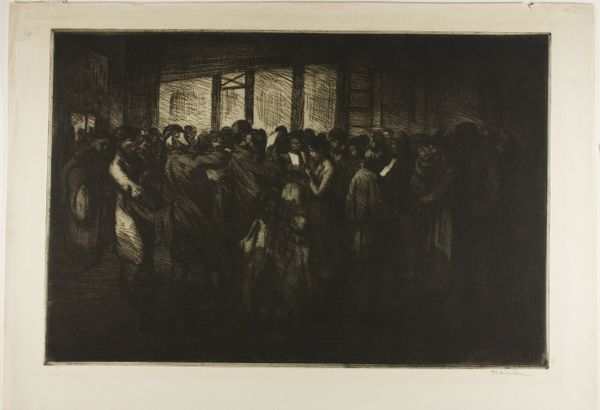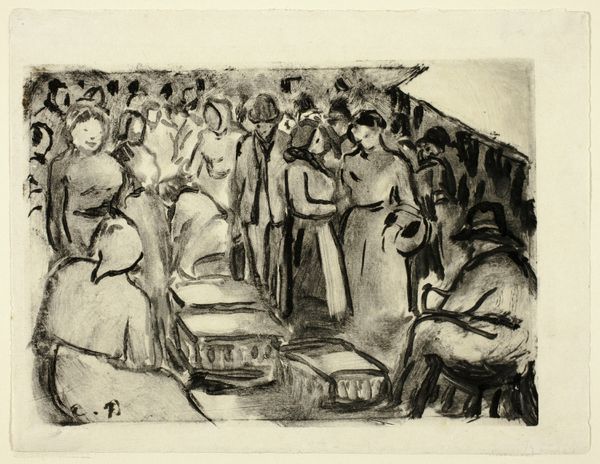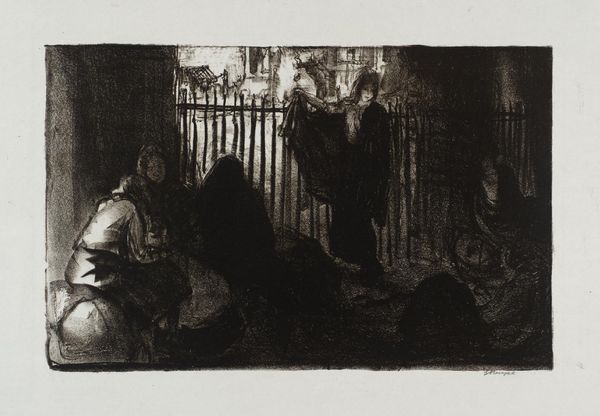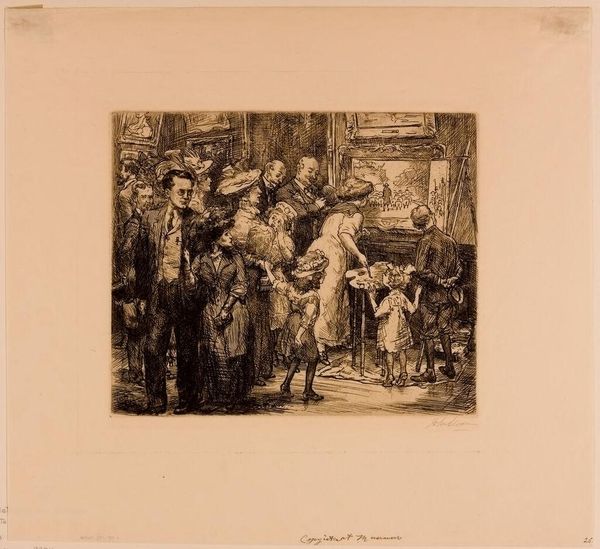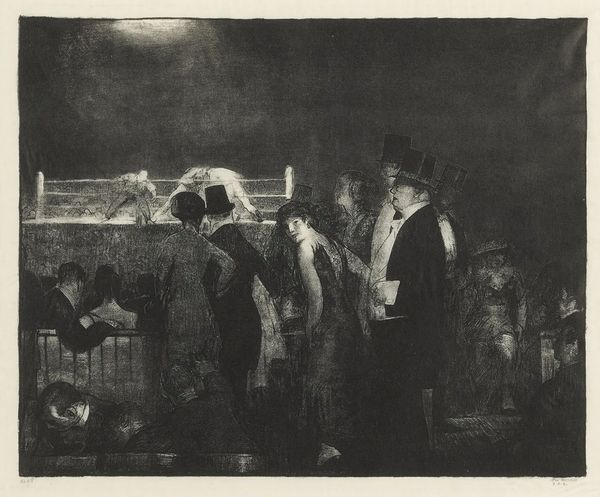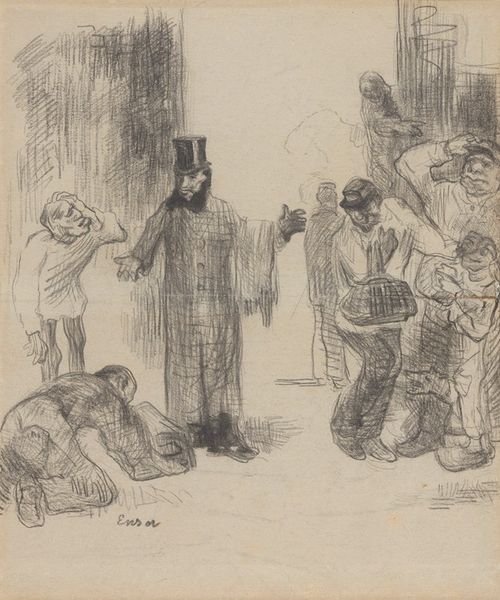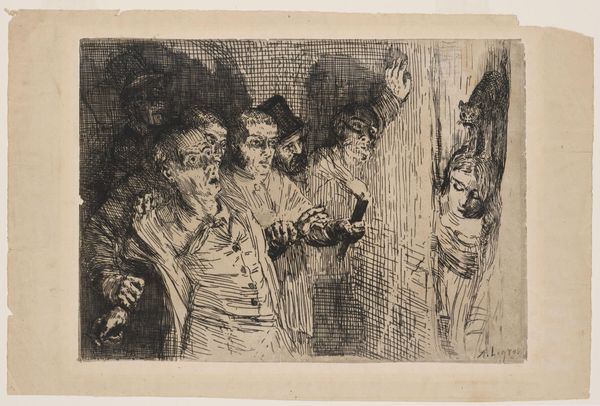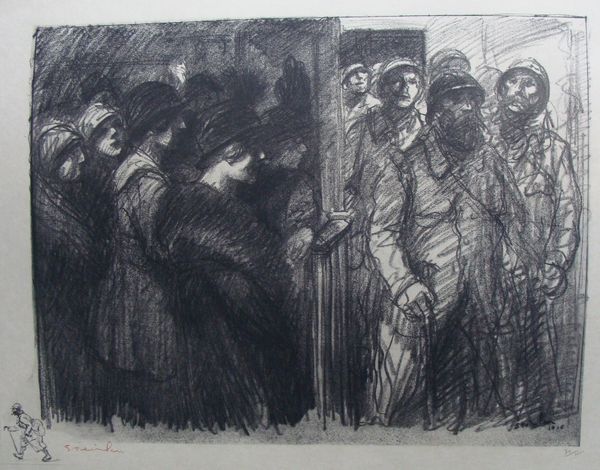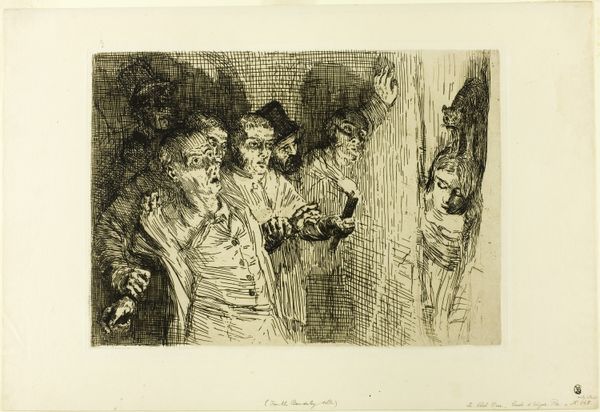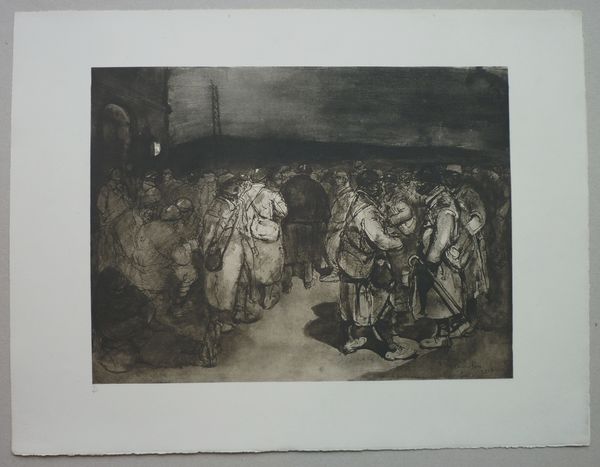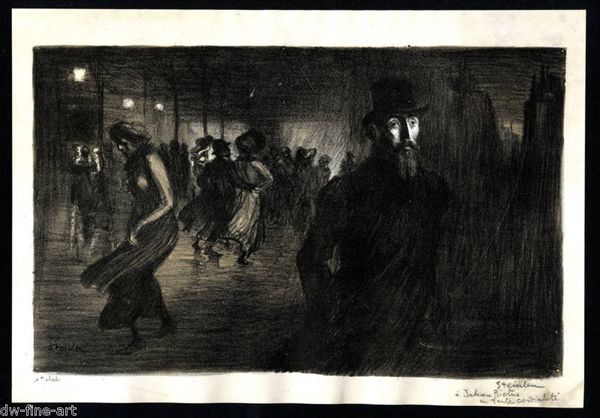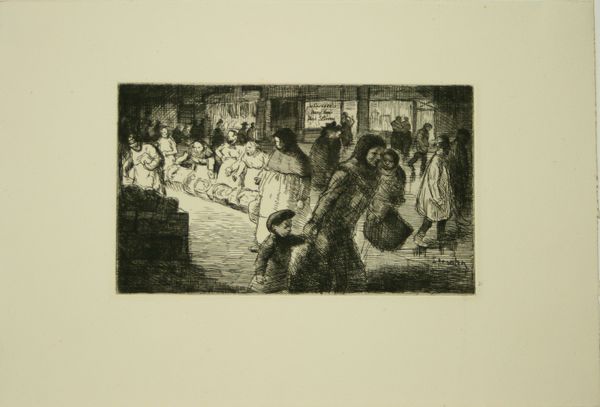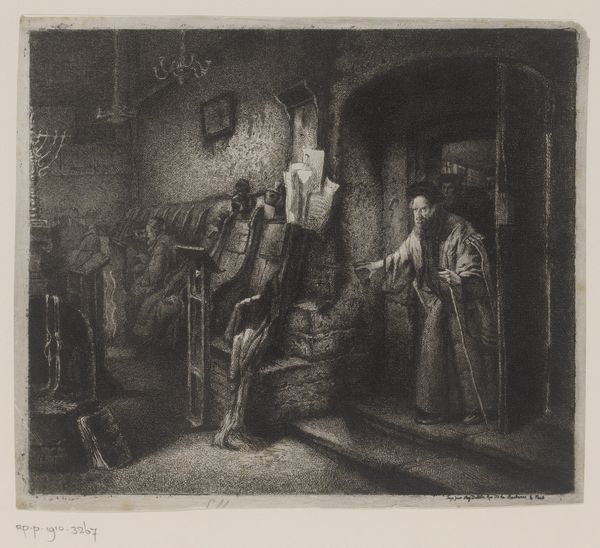
drawing, photography, ink, charcoal
#
portrait
#
drawing
#
narrative-art
#
charcoal drawing
#
photography
#
ink
#
group-portraits
#
expressionism
#
charcoal
#
charcoal
Copyright: Public domain
Editor: So, this is Théophile Alexandre Steinlen’s "Les Adieux," created in 1916 using charcoal and ink. It’s a fairly somber piece, depicting what appears to be a crowd seeing off soldiers. What do you see in it? Curator: Initially, the composition strikes me. The contrast between the dark, almost oppressive mass of figures and the small area of light directs the eye. Observe the layering of forms, how Steinlen utilizes chiaroscuro to create depth and evoke an atmosphere of both intimacy and collective sorrow. Editor: The stark contrast definitely amplifies the mood. Is the lack of detail in the figures intentional? Curator: Precisely. It transcends simple representation. Consider the application of the charcoal itself – the varied pressure and density creates texture, almost a physical manifestation of grief. Note the compositional choice to render the faces in shadow; it invites the viewer to contemplate the universal nature of loss during wartime. How do you read the figures' postures and gestures? Editor: I see resignation, maybe some quiet defiance. There's a sense of unity, despite the individual suffering. But beyond that, I hadn’t considered how the charcoal itself contributes. Curator: It’s in those very material choices that the emotional weight of the piece truly resides. It isn't merely a picture, but an embodied emotion constructed by compositional relations, shadow, and texture. Editor: I never considered the technique could have such a prominent impact on the feeling evoked by the piece. It really does underscore the weight and despair in the picture. Thank you. Curator: My pleasure. Reflecting upon how Steinlen used the formal properties of the work has shed light on new perspective about the art’s deeper themes.
Comments
No comments
Be the first to comment and join the conversation on the ultimate creative platform.
